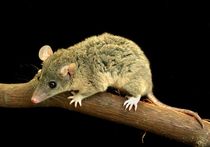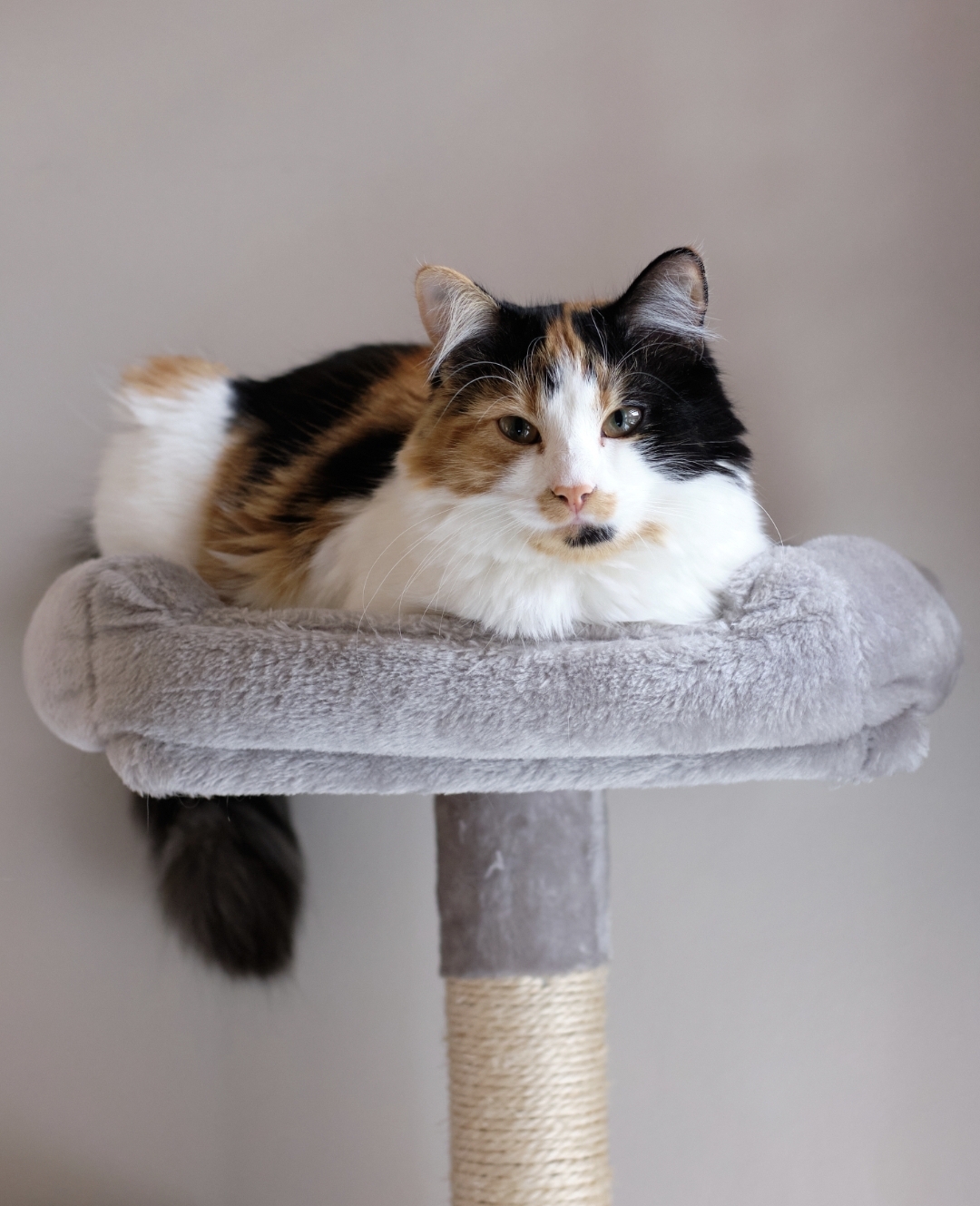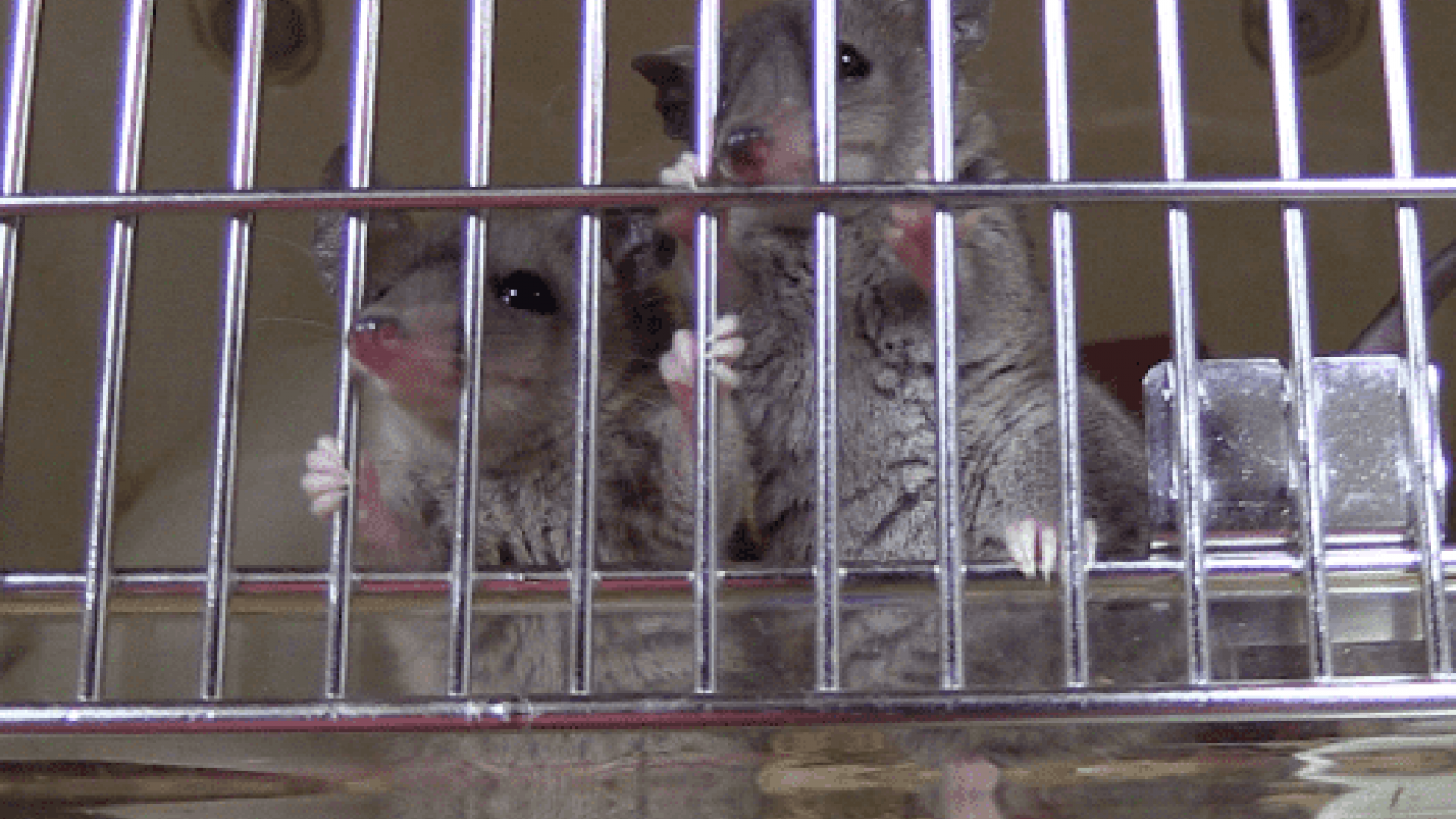Grey short-tailed opossums, or laboratory opossums, (Monodelphis domestica) are marsupials that are native to South America. Unlike North American opossums, which are the size of a full-grown cat, they are only about six inches long.

Opossums are the only marsupial animal bred for research. Because marsupials split from our branch of the mammal family tree around 148 million years ago, their different biology allows scientists to contrast and compare our evolutionary differences.
We also see examples of convergent evolution in opossums. For example opossums have X-chromosome inactivation as humans do. X-chromosome inactivation explains why females with twice as many X chromosome as males do not have twice as many X chromosome gene products as males, who only possess a single copy of the X chromosome.
 This is the way that one of the X chromosomes in female cells is silenced, and can result in diseases such as cancer when it goes wrong. Incidentally, this is also explains the colour patterns in tortoiseshell and calico cats.
This is the way that one of the X chromosomes in female cells is silenced, and can result in diseases such as cancer when it goes wrong. Incidentally, this is also explains the colour patterns in tortoiseshell and calico cats.
Opossums differ from ‘true’ marsupials, such as kangaroos and possums, by not having a pouch. Bean-sized pups are born after 13.5 days gestation. They then crawl up the mothers fur to the teat and latch on. Newborn opossums are at a similar stage of development to a six-week old human foetus, so their body systems are immature and ideal for studying the development of organs such as the brain, especially as they are conveniently already outside of the mother's womb.
Opossums are also the only animals other than humans which develop skin cancer caused by UV light so they are good for studying melanoma.
There are only a few colonies of opossums in laboratories throughout the world. One of these is in The Francis Crick Institute. The Crick technicians who care for opossums are testing new and improved ways to feed and clean them. They also experiment with keeping them stimulated by providing toys such as balls and chews, and regulatory adding new ones into the mix to keep the animals active.
In this opossum managment refinement the animals are fed custard as part of their training.
References
The Laboratory Opossum ( Monodelphis domestica ) in Laboratory Research
https://academic.oup.com/ilarjournal/article/38/1/4/664006
The Laboratory Opossum (Monodelphis domestica) as a Natural Mammalian Model for Human Cancer Research
https://www.ncbi.nlm.nih.gov/pmc/articles/PMC2600460/
How we use opossums in research
https://www.crick.ac.uk/news/2020-03-03_how-do-we-use-opossums-in-research
https://en.wikipedia.org/wiki/Gray_short-tailed_opossum
Husbandry of Monodelphis domestica in the study of mammalian embryogenesis
https://www.nature.com/articles/laban0710-219?proof=true
The opossum genome: Insights and opportunities from an alternative mammal
https://genome.cshlp.org/content/18/8/1199.full/The-opossum-genome-Insights-and-opportunities-from-an-alternative-
Refinement in opossum care filmed at Oxford University - using custard treats to train opossums to stand
https://uaroceania.org/resources/video-library/opossums-in-medical-research/
Model for nonalcoholic steatohepatitis (NASH), resembles alcoholic liver disease
https://www.txbiomed.org/news-press/news-releases/new-animal-model-may-lead-treatments-common-liver-disease-affects-millions-americans/




